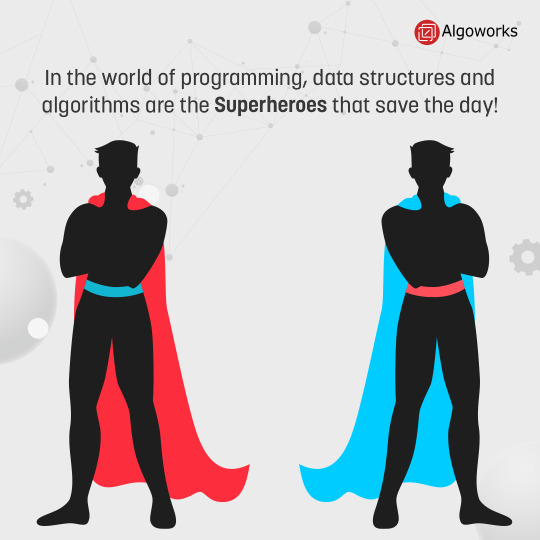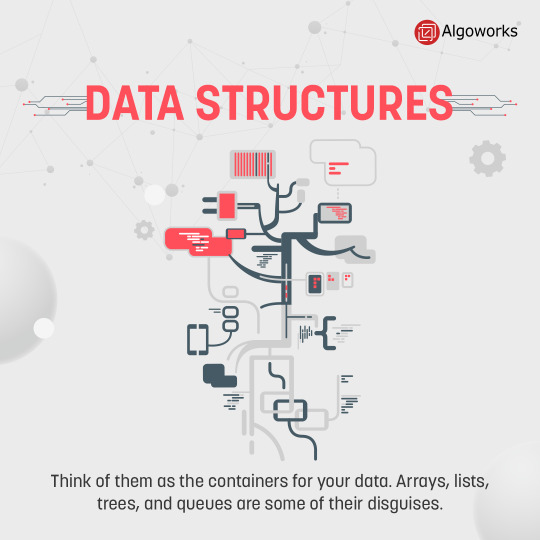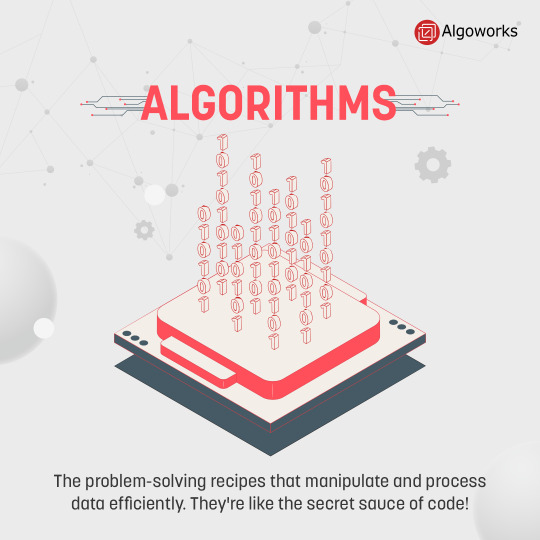#algorithms and data structures
Explore tagged Tumblr posts
Text
youtube
Statistics - A Full Lecture to learn Data Science (2025 Version)
Welcome to our comprehensive and free statistics tutorial (Full Lecture)! In this video, we'll explore essential tools and techniques that power data science and data analytics, helping us interpret data effectively. You'll gain a solid foundation in key statistical concepts and learn how to apply powerful statistical tests widely used in modern research and industry. From descriptive statistics to regression analysis and beyond, we'll guide you through each method's role in data-driven decision-making. Whether you're diving into machine learning, business intelligence, or academic research, this tutorial will equip you with the skills to analyze and interpret data with confidence. Let's get started!
#education#free education#technology#educate yourselves#educate yourself#data analysis#data science course#data science#data structure and algorithms#youtube#statistics for data science#statistics#economics#education system#learn data science#learn data analytics#Youtube
4 notes
·
View notes
Text
(practicing dsa) is somebody gonna match my leet
#dsa#data structures and algorithms#leetcode#😀#recently i’ve just been spiraling on leet code#computer science
10 notes
·
View notes
Text
The feminine urge to code a silly little text based lesbian romance sim instead of taking this coding exam
#ughhhhhh it’s like data structures and algorithms and it’s been too long since college#and I have the interview on Thursday#it’s gonna be a long week#see how this post was just a secret way for me to whine and complain#lmao
2 notes
·
View notes
Text
7 Growth Functions in Data Structures: Behind asymptotic notations
Top coders use these to calculate time complexity and space complexity of algorithms.
https://medium.com/competitive-programming-concepts/7-growth-functions-in-data-structures-behind-asymptotic-notations-0fe44330daef
#software#programming#code#data structures#algorithm#algo trading#datastructures#data#datascience#data analytics
3 notes
·
View notes
Text
Normally I just post about movies but I'm a software engineer by trade so I've got opinions on programming too.
Apparently it's a month of code or something because my dash is filled with people trying to learn Python. And that's great, because Python is a good language with a lot of support and job opportunities. I've just got some scattered thoughts that I thought I'd write down.
Python abstracts a number of useful concepts. It makes it easier to use, but it also means that if you don't understand the concepts then things might go wrong in ways you didn't expect. Memory management and pointer logic is so damn annoying, but you need to understand them. I learned these concepts by learning C++, hopefully there's an easier way these days.
Data structures and algorithms are the bread and butter of any real work (and they're pretty much all that come up in interviews) and they're language agnostic. If you don't know how to traverse a linked list, how to use recursion, what a hash map is for, etc. then you don't really know how to program. You'll pretty much never need to implement any of them from scratch, but you should know when to use them; think of them like building blocks in a Lego set.
Learning a new language is a hell of a lot easier after your first one. Going from Python to Java is mostly just syntax differences. Even "harder" languages like C++ mostly just mean more boilerplate while doing the same things. Learning a new spoken language in is hard, but learning a new programming language is generally closer to learning some new slang or a new accent. Lists in Python are called Vectors in C++, just like how french fries are called chips in London. If you know all the underlying concepts that are common to most programming languages then it's not a huge jump to a new one, at least if you're only doing all the most common stuff. (You will get tripped up by some of the minor differences though. Popping an item off of a stack in Python returns the element, but in Java it returns nothing. You have to read it with Top first. Definitely had a program fail due to that issue).
The above is not true for new paradigms. Python, C++ and Java are all iterative languages. You move to something functional like Haskell and you need a completely different way of thinking. Javascript (not in any way related to Java) has callbacks and I still don't quite have a good handle on them. Hardware languages like VHDL are all synchronous; every line of code in a program runs at the same time! That's a new way of thinking.
Python is stereotyped as a scripting language good only for glue programming or prototypes. It's excellent at those, but I've worked at a number of (successful) startups that all were Python on the backend. Python is robust enough and fast enough to be used for basically anything at this point, except maybe for embedded programming. If you do need the fastest speed possible then you can still drop in some raw C++ for the places you need it (one place I worked at had one very important piece of code in C++ because even milliseconds mattered there, but everything else was Python). The speed differences between Python and C++ are so much smaller these days that you only need them at the scale of the really big companies. It makes sense for Google to use C++ (and they use their own version of it to boot), but any company with less than 100 engineers is probably better off with Python in almost all cases. Honestly thought the best programming language is the one you like, and the one that you're good at.
Design patterns mostly don't matter. They really were only created to make up for language failures of C++; in the original design patterns book 17 of the 23 patterns were just core features of other contemporary languages like LISP. C++ was just really popular while also being kinda bad, so they were necessary. I don't think I've ever once thought about consciously using a design pattern since even before I graduated. Object oriented design is mostly in the same place. You'll use classes because it's a useful way to structure things but multiple inheritance and polymorphism and all the other terms you've learned really don't come into play too often and when they do you use the simplest possible form of them. Code should be simple and easy to understand so make it as simple as possible. As far as inheritance the most I'm willing to do is to have a class with abstract functions (i.e. classes where some functions are empty but are expected to be filled out by the child class) but even then there are usually good alternatives to this.
Related to the above: simple is best. Simple is elegant. If you solve a problem with 4000 lines of code using a bunch of esoteric data structures and language quirks, but someone else did it in 10 then I'll pick the 10. On the other hand a one liner function that requires a lot of unpacking, like a Python function with a bunch of nested lambdas, might be easier to read if you split it up a bit more. Time to read and understand the code is the most important metric, more important than runtime or memory use. You can optimize for the other two later if you have to, but simple has to prevail for the first pass otherwise it's going to be hard for other people to understand. In fact, it'll be hard for you to understand too when you come back to it 3 months later without any context.
Note that I've cut a few things for simplicity. For example: VHDL doesn't quite require every line to run at the same time, but it's still a major paradigm of the language that isn't present in most other languages.
Ok that was a lot to read. I guess I have more to say about programming than I thought. But the core ideas are: Python is pretty good, other languages don't need to be scary, learn your data structures and algorithms and above all keep your code simple and clean.
#programming#python#software engineering#java#java programming#c++#javascript#haskell#VHDL#hardware programming#embedded programming#month of code#design patterns#common lisp#google#data structures#algorithms#hash table#recursion#array#lists#vectors#vector#list#arrays#object oriented programming#functional programming#iterative programming#callbacks
20 notes
·
View notes
Text
if ur gonna write a textbook with java in it maybe learn java naming conventions first
2 notes
·
View notes
Text
What Dijkstra's two-stack algorithm does to Left parenthesis of Infix expression is everyone does to me
.
.
.
IGNORE 🤡
7 notes
·
View notes
Text
Exploring Quantum Leap Sort: A Conceptual Dive into Probabilistic Sorting Created Using AI
In the vast realm of sorting algorithms, where QuickSort, MergeSort, and HeapSort reign supreme, introducing a completely new approach is no small feat. Today, we’ll delve into a purely theoretical concept—Quantum Leap Sort—an imaginative algorithm created using AI that draws inspiration from quantum mechanics and probabilistic computing. While not practical for real-world use, this novel…
#AI#algorithm#amazon#chatgpt#coding#computer science#css#data-structures#DSA#engineering#google#heapsort#insertionsort#javascript#mergesort#new#programming#python#quicksort#radixsort#sorting#tech#tesla#trending#wipro
2 notes
·
View notes
Text


// August 18th, 2024
Yesterday I broke in tears because I think I’m going to fail Data Structures and Algorithms this semester. It’s just, too much. Not the topics I have to study, not even that I don’t actually enjoy practicing it, oh no. It’s that I don’t think I’m going to be able to send all of my assignments on time and they affect the final grade a lot. The materials for all three subjects get released only on Wednesdays at noon and it’s expected that an almost impossible amount of assignments are delivered before the following Tuesday at 8 p.m.
Why can’t I, for instance, do the work, send it as soon as I have it ready, and they can just take into account that I actually followed on the lessons and studied hard for the two exams before the final? It’s just… I don’t know. It seems ridiculous to me. I would be doing my best even without having that stupid pressure of doing the assignments on time, like any other person who is serious about theirs studies. I know I probably sound like a stupid kid, but people going to this university at night usually have a job already, otherwise, why wouldn’t we be taking the lessons on mornings/afternoons? Don’t they think about those cases? Incredible.
And I know one can probably think, “well, why don’t you drop that subject and follow up others and retake this one further in the future?
And the answer to that is, a) I’m feeling old to keep postponing my graduation (35 is becoming my least worst shot) and b) I have more plans, like for other important aspects of my life as well. And… ugh. The pressure. It’s too much.
I spoke to my sweet boyfriend about all these worries I have and he’s happy with both me telling him what I feel and how hard I am working with this. “Honey, it’s just the second week of the semester. You got this”. Cuddles and sushi were provided, and even when that didn’t wash the worries or pressure away, I felt loved. And cared for. I’m so lucky to have him in my life.
Sorry for the rant guys. I get that this is just the way it is and that these are the terms for getting a good grade, and if I don’t like it I can just leave it and try again, but… I just needed to get some of it out of my chest 🥲
But hey, at least I was able to write my very first little programs in C yesterday. Yay 🍷
#studyblr#my post#shelikesrainydays#pressure#being and adult and a student is so freaking hard#personal rant#data structures#algorithms#C#paulastudies
2 notes
·
View notes
Text
41/196
When your passion and purpose align, you won't be chasing your dreams - they'll be magnetically drawn to you. Focus, dedication, and clarity create an irresistible pull that attracts success.
-Your Ambition-lessness won't pay your bills, DSA will.

#data structures and algorithms#196series#dark academia#focus#consistency#dream#ambitious#dedication#passion#coding#spongebob#DSA
3 notes
·
View notes
Text
youtube
Data Structure and Algorithms in JAVA | Full Course on Data Structure
In this course, we are going to discuss Data Structures and Algorithms using Java Programming. The data structure is a way to store and organize data so that it can be used efficiently. It is a set of concepts that we can use in any programming language to structure the data in the memory. Data structures are widely used in almost every aspect of computer science i.e. operating systems, computer science, compiler design, Artificial Intelligence, graphic,s and many more. Some examples of Data structures that we are going to cover in this course are arrays, linked lists, stack, queue, Binary Tree, Binary Search Tree, Graphs, etc. Apart from knowing these data structures, it's also important to understand the algorithmic analysis of a given code. Different Sorting and searching techniques will be talked about with their implementation in java programming. Lastly, this course contains information on the Greedy approach, Dynamic approach, and divide and Conquer approach to programming.
#youtube#free education#education#educate yourselves#technology#educate yourself#data structures#data analytics#Data Structure and Algorithms in JAVA#javaprogramming#Data Structure and Algorithms#how to think like a programmer#programming classes#programming
3 notes
·
View notes
Text

Summer Internship Program 2024
For More Details Visit Our Website - internship.learnandbuild.in
#machine learning#programming#python#linux#data science#data scientist#frontend web development#backend web development#salesforce admin#salesforce development#cloud AI with AWS#Internet of things & AI#Cyber security#Mobile App Development using flutter#data structures & algorithms#java core#python programming#summer internship program#summer internship program 2024
2 notes
·
View notes
Text





Unleash the coding superheroes! 💻🚀
In the dynamic realm of programming, data structures and algorithms emerge as our formidable superheroes, shaping the digital world one efficient line of code at a time. 🦸♂️💡
3 notes
·
View notes
Text
Best Data Structures and Algorithms Course
Data Structures and Algorithms are the backbone of computer science. They are essential for solving complex problems efficiently, making them indispensable skills for programmers and software developers. To master these concepts, it's crucial to choose the right course. In this article, we'll explore some of the best-known courses available online, and we'll also introduce you to scholarhat's Best Data Structures and Algorithms Course, a program designed to take your understanding to the next level.
1.Udemy - Data Structures and Algorithms: Deep Dive Using JavaUdemy Data Structures and Algorithms CourseThis course provides a comprehensive understanding of Data Structures and Algorithms using Java. It covers a wide range of topics with hands-on coding exercises. 2. Scholarhat - Best Data Structures and Algorithms Course
scholarhat Best Data Structures and Algorithms Course
When it comes to mastering Data Structures and Algorithms, scholarhat's Best Data Structures and Algorithms Course stands out as an exceptional choice. With a curriculum meticulously designed by experts, this program combines theoretical knowledge with hands-on coding exercises. Moreover, the course emphasizes practical application, ensuring you're not only learning the theory but also applying it in real-world scenarios. With experienced instructors and a supportive community, this course offers an unparalleled learning experience.
3. LinkedIn Learning - Learning Data Structures and AlgorithmsLinkedIn Learning Data Structures and Algorithms CourseThis course offers a practical approach to learning Data Structures and Algorithms, with a focus on real-world applications.
4. GeeksforGeeks - Data Structures and AlgorithmsGeeksforGeeks Data Structures and Algorithms CourseGeeksforGeeks offers a plethora of tutorials, articles, and practice problems on Data Structures and Algorithms. It's a valuable resource for self-paced learning.
5. Codecademy - AlgorithmsCodecademy Algorithms CourseCodecademy provides an interactive platform for learning algorithms. The course is suitable for beginners and covers essential algorithmic concepts.
6. LeetCode - Data Structures and AlgorithmsLeetCodeWhile not a traditional course, LeetCode is a popular platform for practicing Data Structures and Algorithms through coding challenges. It's an excellent resource to reinforce your skills.
7. YouTube - MyCodeSchoolMyCodeSchool YouTube ChannelMyCodeSchool offers a series of video tutorials on Data Structures and Algorithms. The tutorials are clear, concise, and perfect for visual learners.
8. Hackerrank - Data StructuresHackerrank Data Structures CourseHackerrank offers a series of tutorials and challenges to help you master various data structures.
9. Princeton University - Algorithms Part I and Part II (Coursera)Princeton University Algorithms Part I Princeton University Algorithms Part IIThis series of courses covers fundamental algorithms and data structures, taught by renowned professors from Princeton University. Conclusion
Selecting the right course to master Data Structures and Algorithms is crucial for any aspiring programmer. The courses mentioned above offer excellent options for learners at various levels of expertise. However, for an exceptional learning experience, consider enrolling in scholarhat's Best Data Structures and Algorithms Course. With its industry-leading curriculum and personalized support, it's the perfect choice to advance your skills in this critical area of computer science.
Enroll in scholarhat's course now. Take the first step towards becoming a Data Structures and Algorithms expert!
5 notes
·
View notes
Text

Expertifie partners with companies and individuals to address their unique needs, providing training and coaching that helps working professionals achieve their career goals. They teach their students all the relevant skills needed in software jobs, mentor them to crack recruitment processes and also provide them referrals to the best opportunities in the software industry across the globe. Their vision is to empower career growth and advancement for every member of the global workforce as their trusted lifelong learning partners.
The main features of Expertifie courses are:
1. Instructor-led live interactive training.
2. Advance level of coding and excellent mentoring from our industry experts.
3. Receive guidance that makes you skill ready for interviews and on the job scenarios.
4. Career Support through Mock Interviews and Job Referral.
5. Coding Sessions and Assignments for each topic.
6. Up to 4 Mock Interviews.
7. Sessions by Industry Experts from MAANG.
The courses provided are:
Data Structures & Algorithms
System Design (HLD + LLD)
Full Stack Development
#learn full stack development#learn linux kernel#learn system design#learn data structure and algorithms
2 notes
·
View notes
Text

Master Data Structures and Algorithms to boost coding skills, crack interviews, and build efficient apps. Learn DSA with USDSI certifications today
0 notes